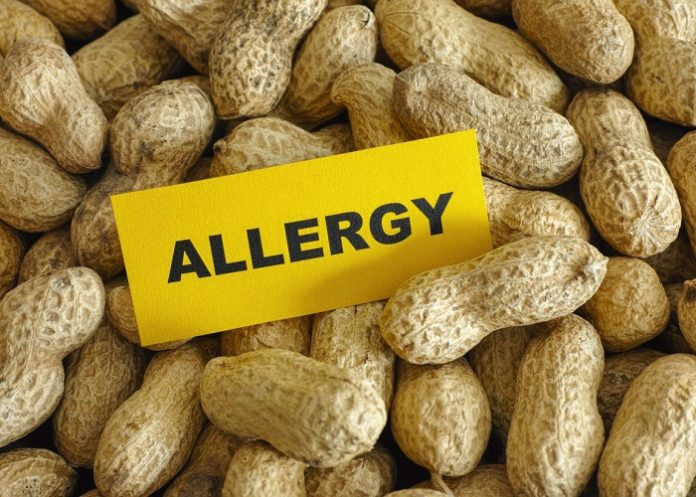A British man who has a severe peanut allergy now eats four nuts each morning, which has transformed his life, he said.
This “life-changing” switch was a result of a first-of-its-kind trial by King’s College London and Guy’s and St Thomas’ NHS Foundation, which discovered that people with peanut allergies were slowly desensitised after daily exposure to the nuts.
The researchers stressed, however, that this treatment on adults should only be conducted under very close supervision.
The peanut desensitisation, also known as oral immunotherapy, works by introducing micro amounts of peanuts and gradually increasing the dosage to build up immunity.
Richard Lassiter said that before the trial he “managed” his condition but the Londoner always felt nervous eating out.
“I had a really severe episode on a holiday to Chile with my wife in 2018 that changed everything,” he told the Daily Mail.
He said the episode occurred when they were on holiday “1 000 miles from anywhere” when he was given food containing peanuts.
Lassiter used his auto-injector pen, and his inhaler to ease his breathing, and was taken to hospital by ambulance, where he stayed in a high dependency unit overnight and was given adrenaline and oxygen.
“It was terrifying,” he recalls.
On another occasion, while dining out, Lassiter said that he accidentally ate peanuts after they were hidden under some ice cream. “Within a few seconds, I knew I was in trouble.
“By the time I got to hospital it was pretty bad – I’d swollen up completely and remember asking the nurse if I was going to make it.”
Since the study, however, his boosted tolerance has changed his life.
Experts believe the results of the research, published in the journal Allergy, could give hope to thousands of people with peanut allergies.
The researchers tested 18 adults with a typical peanut allergy by giving them small amounts of peanut flour to eat at home, starting with the equivalent of 0.5% to 1% of a whole peanut.
Their dosage increased gradually and once they could tolerate 50-100mg of peanut protein they were switched to eating whole peanuts, peanut butter or peanut products.
By the end of the study, which was funded by the National Institute for Health and Care Research, two-thirds (67%) were able to eat the equivalent of five peanuts without reacting.
Older “desensitisation” studies have mainly focused on children, so this was the first time the theory was tested on adults.
Chief investigator Stephen Till, professor of allergy at King’s College London and consultant allergist at Guy’s and St Thomas’, said he had been previously unable to offer treatment to the “unmet need of adults with peanut allergy”.
This was because the data were all from young children. “In medicine you can’t give treatment to children or to adults based on a clinical trial that’s been performed in the other group,” he said.
“We were really pleased because we got the evidence that we hoped we would get – we saw results that were broadly in line with with what had been obtained from studies in children.
“Our phase two study suggests that this treatment is is potentially effective in adults.”
But he said larger studies were needed to confirm findings and stressed that food immunotherapy “definitely must be done under very close clinical supervision”.
Adam Fox, chair of the National Allergy Study Group, and Professor of paediatric allergy at King’s College London, similarly said that typically oral immunotherapy was “just for children”, with evidence to show that the earlier a child is exposed, the safer and better the outcome.
“However, that doesn’t mean that the benefits would not still be worthwhile for adults, and this study shows that for many, oral immunotherapy for peanuts at least, can still make a real difference,” he added.
“This is only a small study and we hope to larger ones will follow, but it’s an important proof of principle that this may well be a treatment for adults too.”
Study details
Oral Immunotherapy in Peanut-Allergic Adults Using Real-World Materials
Hannah Hunter, Kok Loong Ue, Carina Venter et al.
Published in Allergy on 23 April 2025
Abstract
Background
Peanut oral immunotherapy (OIT) has shown effectiveness in achieving desensitisation of children; however, evidence in adults is lacking.
Methods
This phase II trial evaluated peanut OIT in peanut-allergic adults using real-world peanut products. A Simon's minimax two-stage design, incorporating a stop:go for futility, was employed. A separate untreated control group was also recruited for comparison of mechanistic parameters. Participants underwent baseline double-blind placebo-control food challenges (DBPCFC) with peanut protein doses of 0.3 to 300 mg. Reacting participants were initiated on daily OIT with 2-weekly updosing until reaching a maintenance dose of 1000 mg (four large peanuts). The primary outcome was the proportion of OIT participants who tolerated a cumulative dose of 1.4 g peanut protein during exit DBPCFC (doses provided 0.3-3000 mg).
Results
Twenty-one adults (8 female; mean age 24.2 years [SD 4.9]) were enrolled in the OIT group, with 67% achieving the daily maintenance dose and meeting the primary endpoint. Three withdrew due to adverse reactions, and a further three did not complete the trial for reasons unrelated to OIT. The median tolerated dose increased from 30 mg (equivalent to approximately 1/8th of a peanut) to 3000 mg (12 peanuts) at the exit challenge, representing a 100-fold increase (p < 0.0001). OIT was associated with an improvement in QoL measures. Suppression of peanut skin prick test sizes and induction of peanut-specific IgG were observed in OIT but not in control participants.
Conclusions
Peanut OIT appears to be an efficacious treatment for adults with peanut allergy. Further studies are needed for confirmation and to characterise safety profiles in different adult subgroups.
See more from MedicalBrief archives:
Australia starts first peanut allergy programme for babies
Peanut allergy breakthrough in US skin patch trial
Peanut allergy may be cured with probiotics and peanut oral immunotherapy
Boiled peanuts conquer children’s allergy – Australian study

